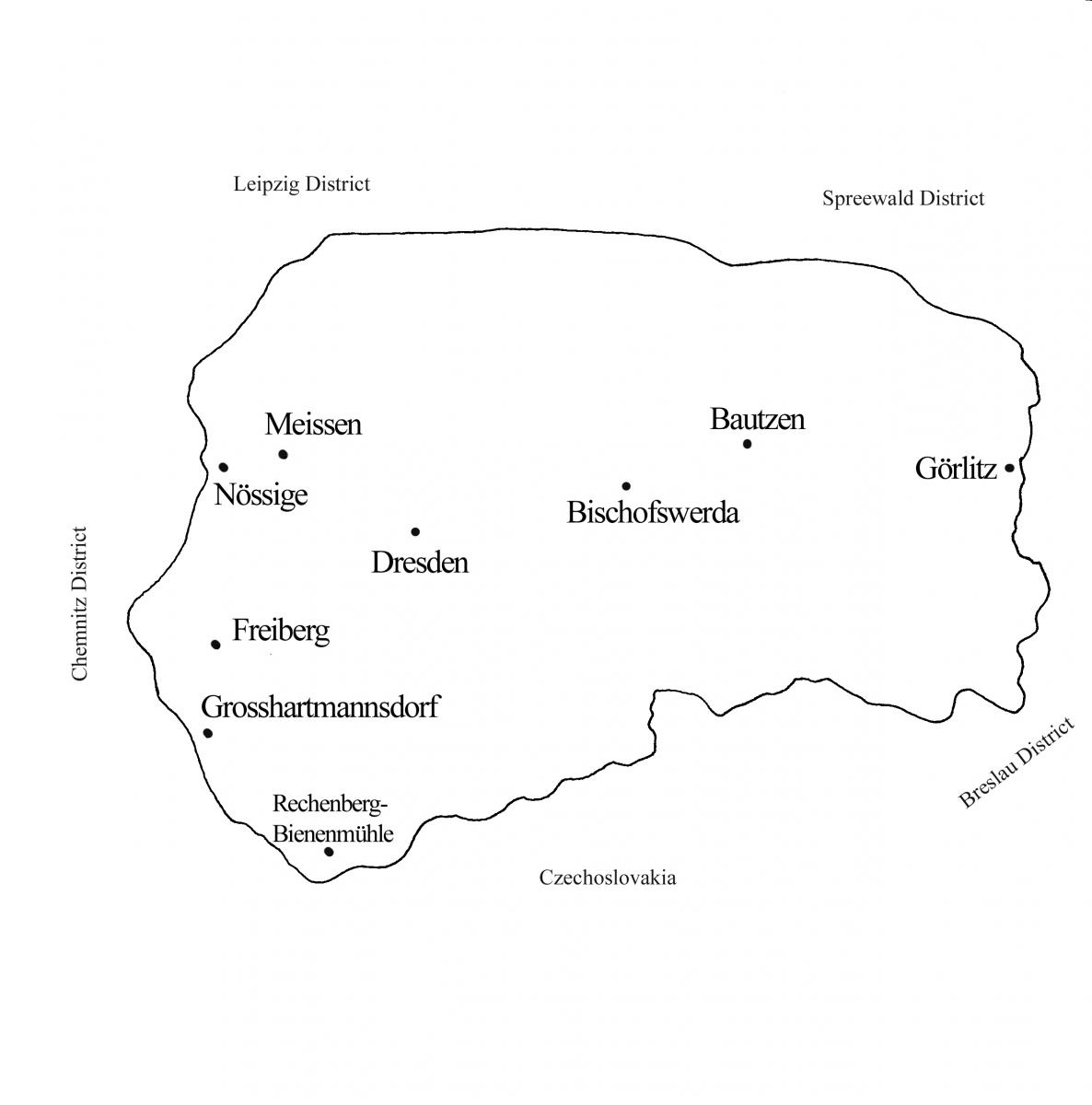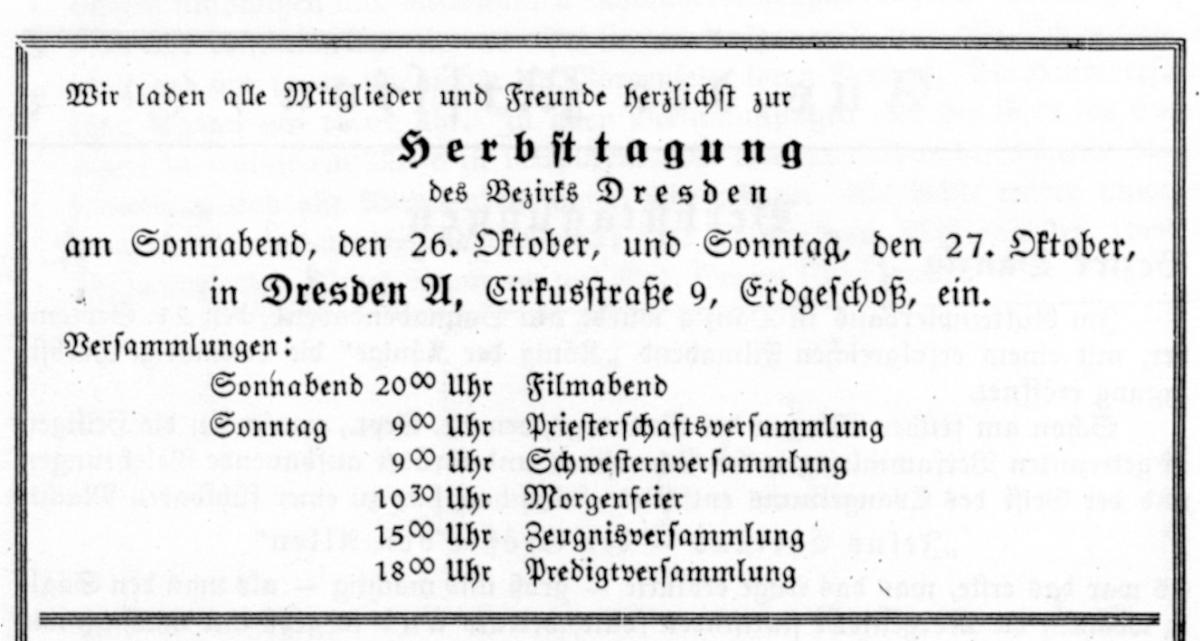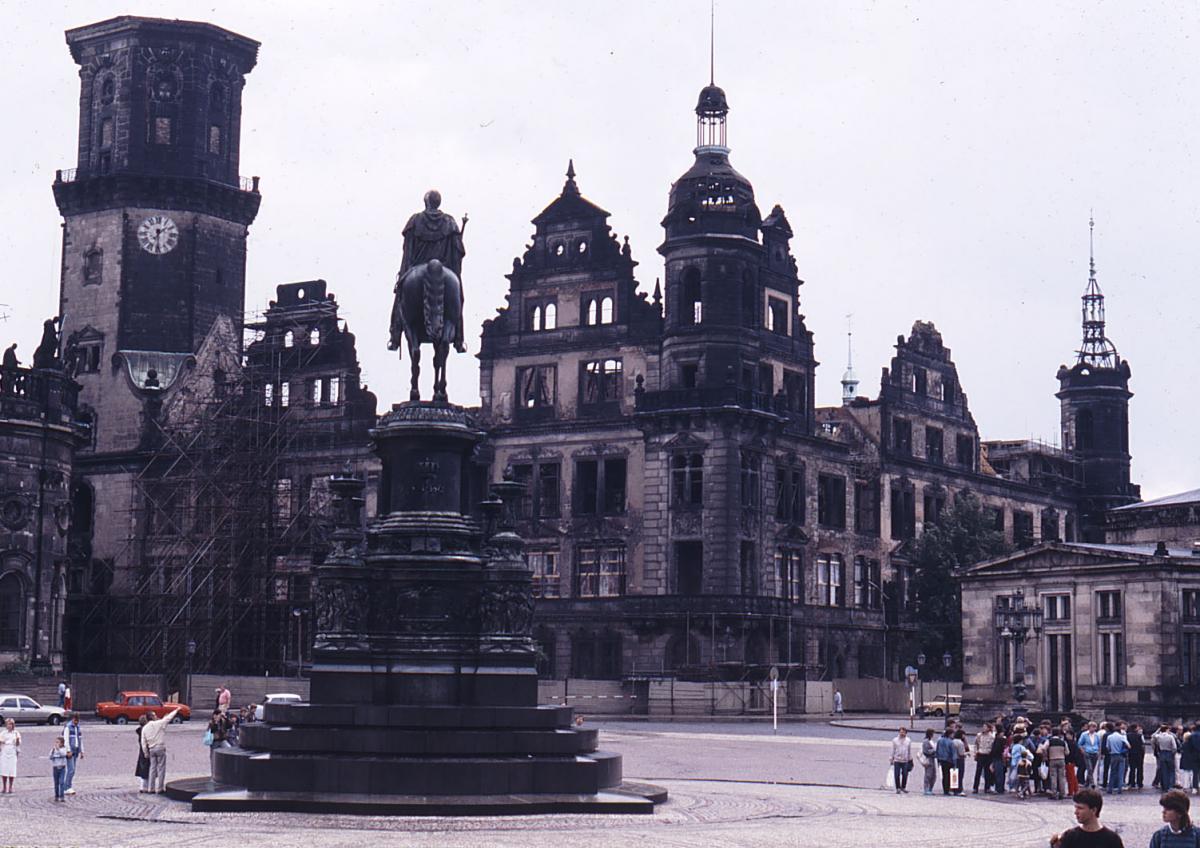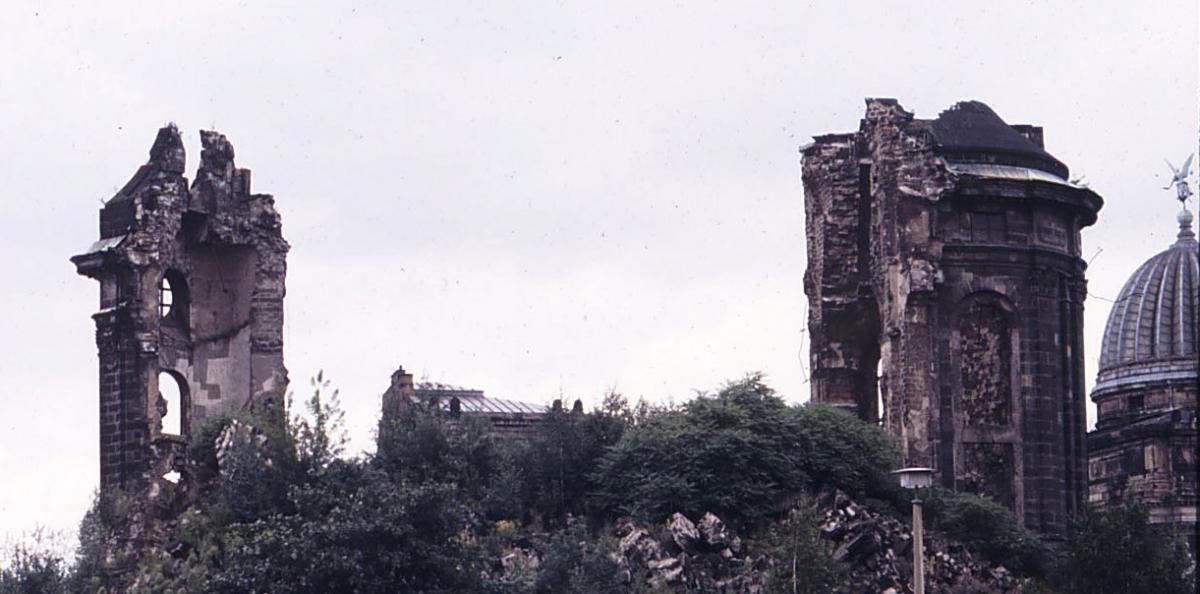Dresden District
Roger P. Minert, In Harm’s Way: East German Latter-day Saints in World War II (Provo, UT: Religious Studies Center, Brigham Young University, 2009), 225-7.
With the sixth-largest district population of Latter-day Saints in the East German Mission in 1939, the Dresden District was located in the south-central area of the mission. The district’s neighbors were the Chemnitz District to the west, the Leipzig District to the northwest, the Spreewald District to the northeast, the Breslau District to the east, and the country of Czechoslovakia to the south.
| Dresden District[1] | 1939 | 1940 | 1941 | 1942 |
| Elders | 44 | 47 | ||
| Priests | 11 | 13 | ||
| Teachers | 27 | 23 | ||
| Deacons | 60 | 56 | ||
| Other Adult Males | 124 | 130 | ||
| Adult Females | 429 | 430 | ||
| Male Children | 38 | 36 | ||
| Female Children | 42 | 45 | ||
| Total | 775 | 780 | 775 | 766 |
When World War II broke out in September 1939, the Dresden District consisted of branches in the following cities: Dresden, Freiberg (eighteen miles southwest of Dresden), Nössige (fifteen miles northwest), Bischofswerda (twenty-five miles northeast), Bautzen (forty miles northeast), and Görlitz (seventy miles northeast). According to the testimonies of eyewitnesses, there were two branches in Dresden by 1943: Altstadt (south of the Elbe River) and Neustadt (north of the river). When the war began, Max Hegewald of Freiberg was serving as the district president.
The East German Mission history includes an entry regarding the establishment of a new branch in Grosshartmannsdorf in January 1939. However, the mission membership records do not show any such branch at the end of 1939, and as of this writing, no surviving eyewitnesses from the Grosshartmannsdorf Branch have been identified.[2]
Max Hegewald was a bailiff for the city court in Freiberg. Born in 1897, he had served in World War I and lost an eye, thus making him unfit for military duty. According to his daughter, Judith (born 1924), he also carried in his skull a bullet that could not be removed, which was the cause of constant and severe headaches. “My father was a very steadfast man. During the war, the traveling for him [became] more difficult because he could not take public transportation that often anymore,” Judith explained.[3]
 The branches of the Dresden District
The branches of the Dresden District
In 1944, the German government announced that all older men and men usually classified as unfit were to be inducted into the Volkssturm (home guard). President Hegewald thus found himself back in uniform but was fortunate to stay close to home and avoid combat in the final months of the war.[4]
Rudolf Hegewald recalled that his father was very busy as the district president. “He was very seldom in Freiberg. He visited all of the branches in the district and even went to district conferences as far away as West Prussia [Schneidemühl District] and East Prussia [Königsberg District].”
Heinz Hegewald explained that his father was a member of the Nazi Party “due to his occupation. All government employees had to be members of the party.” President Hegewald’s sons did not recall that their father had any interest in politics or participated in Nazi Party meetings. As far as they knew, his work as district president was never hindered by his occupation.
The mission records indicate that in January 1943, a group of Saints held church meetings in the small town of Rechenberg-Bienenmühle, about twenty-one miles south of Dresden as the crow flies and two miles from the Czechoslovakian border. There is no indication of how many members were living in the area, but it was likely the case of a family or two, and perhaps they were refugees from areas hit hard by the war. The address of the meeting place was Muldenthalstrasse 41.[5]
 The official announcement and invitation to the 1940 fall conference of the Dresden District (K. Bartsch)
The official announcement and invitation to the 1940 fall conference of the Dresden District (K. Bartsch)
Despite the condition of Dresden after the catastrophic firebombing of February 13–14, 1945, a district conference was held there on Sunday, April 29, 1945. The rooms of the Altstadt Branch had been totally destroyed and those of the Neustadt Branch confiscated for refugee housing, so the conference was held in a Lutheran Church building in Neustadt. Both Margot Burde and Edith Schade had recollections of that conference. Both recalled attending the Sunday meetings while hearing the Soviet artillery and tanks in the distance. The invaders arrived in downtown Dresden the next day.
 The palace of the king of Saxony in Dresden stood as a burned-out ruin until the 1990s. (R. Minert, 1987)
The palace of the king of Saxony in Dresden stood as a burned-out ruin until the 1990s. (R. Minert, 1987)
In light of the widespread destruction in that area of Germany, it is remarkable that when World War II came to an end, members of all of the branches in the Dresden District of the East German Mission still had a place to meet and that meetings were still being held. After only slight interruptions caused by the victorious Allied armies in this region, the branches were alive and well and looking forward to better times.
 Dresden’s Frauenkirche was one of the many cultural monuments destroyed in the firebombing of February 13–14, 1945. (R. Minert, 1987)
Dresden’s Frauenkirche was one of the many cultural monuments destroyed in the firebombing of February 13–14, 1945. (R. Minert, 1987)
Notes
[1] Presiding Bishopric, “Financial, Statistical, and Historical Reports of Wards, Stakes, and Missions, 1884–1955,” CR 4 12, 257.
[2] East German Mission Quarterly Reports, January 15, 1939, no. 53, East German Mission History.
[3] Judith Hegewald, interview by the author in German, Schwerin, Germany, June 11, 2007; summarized in English by Judith Sartowski.
[4] Rudolf Hegewald and Heinz Hegewald, interview by the author, Salt Lake City, January 19, 2007.
[5] East German Mission, “Directory of Meeting Places,”(unpublished manuscript, 1943); private collection.
